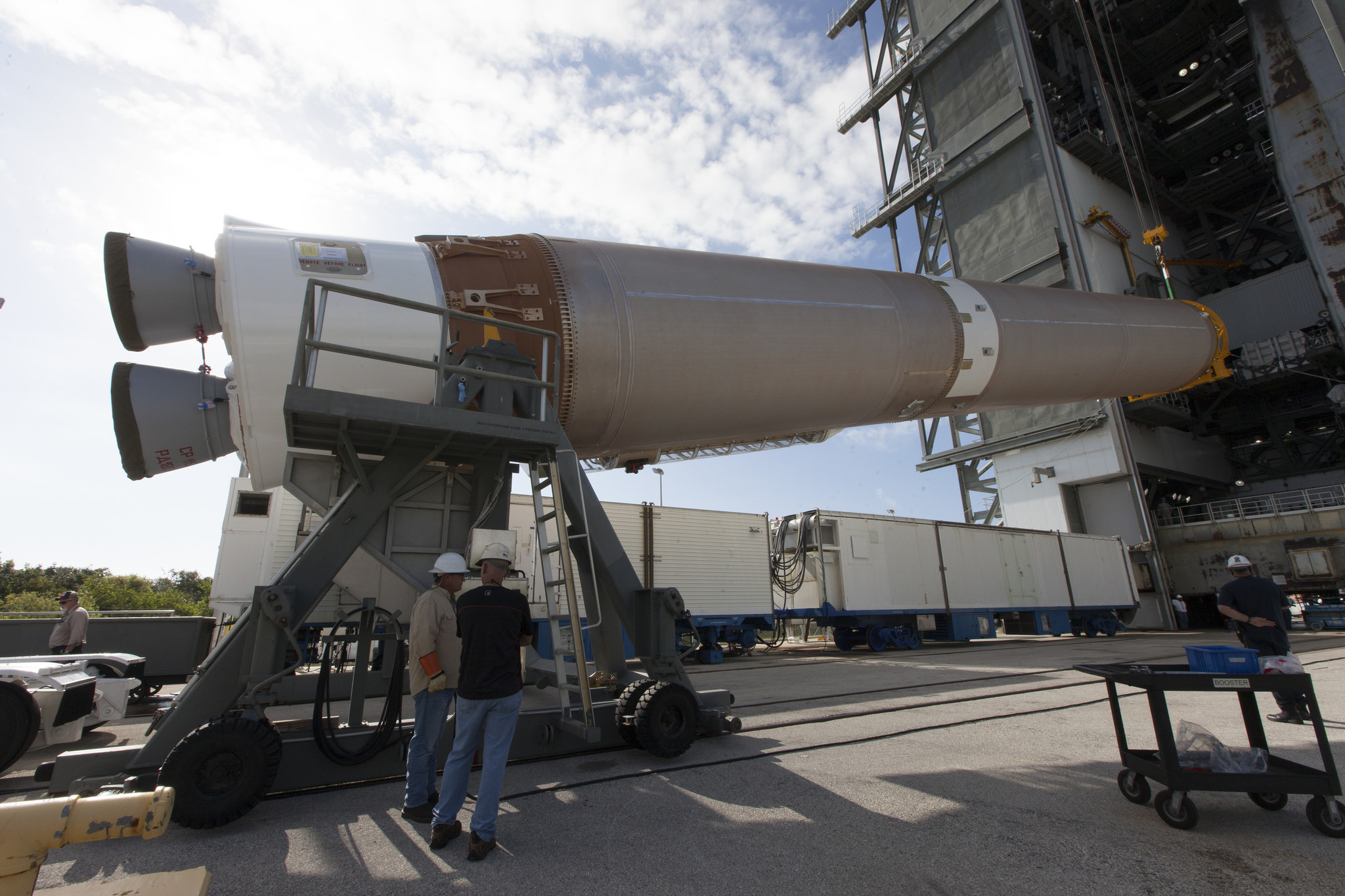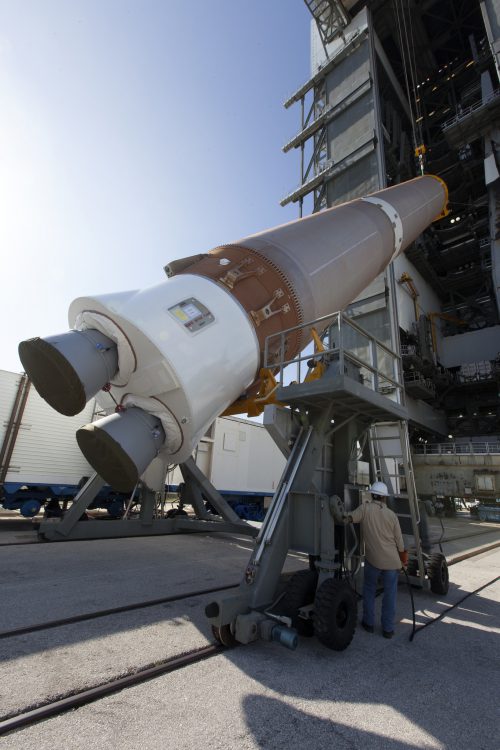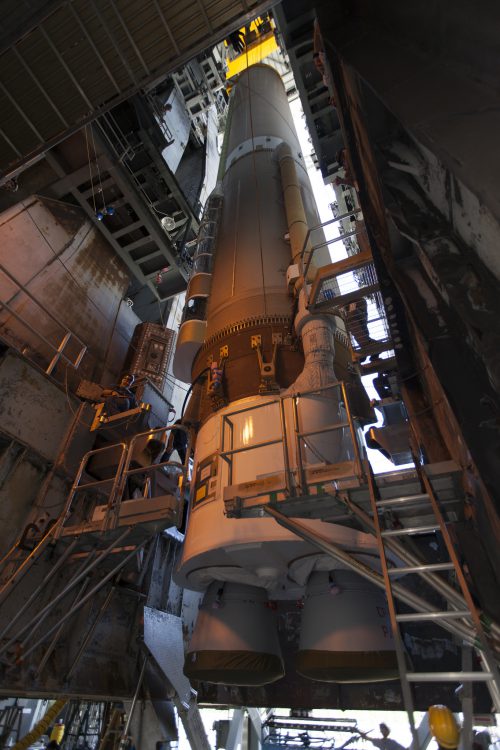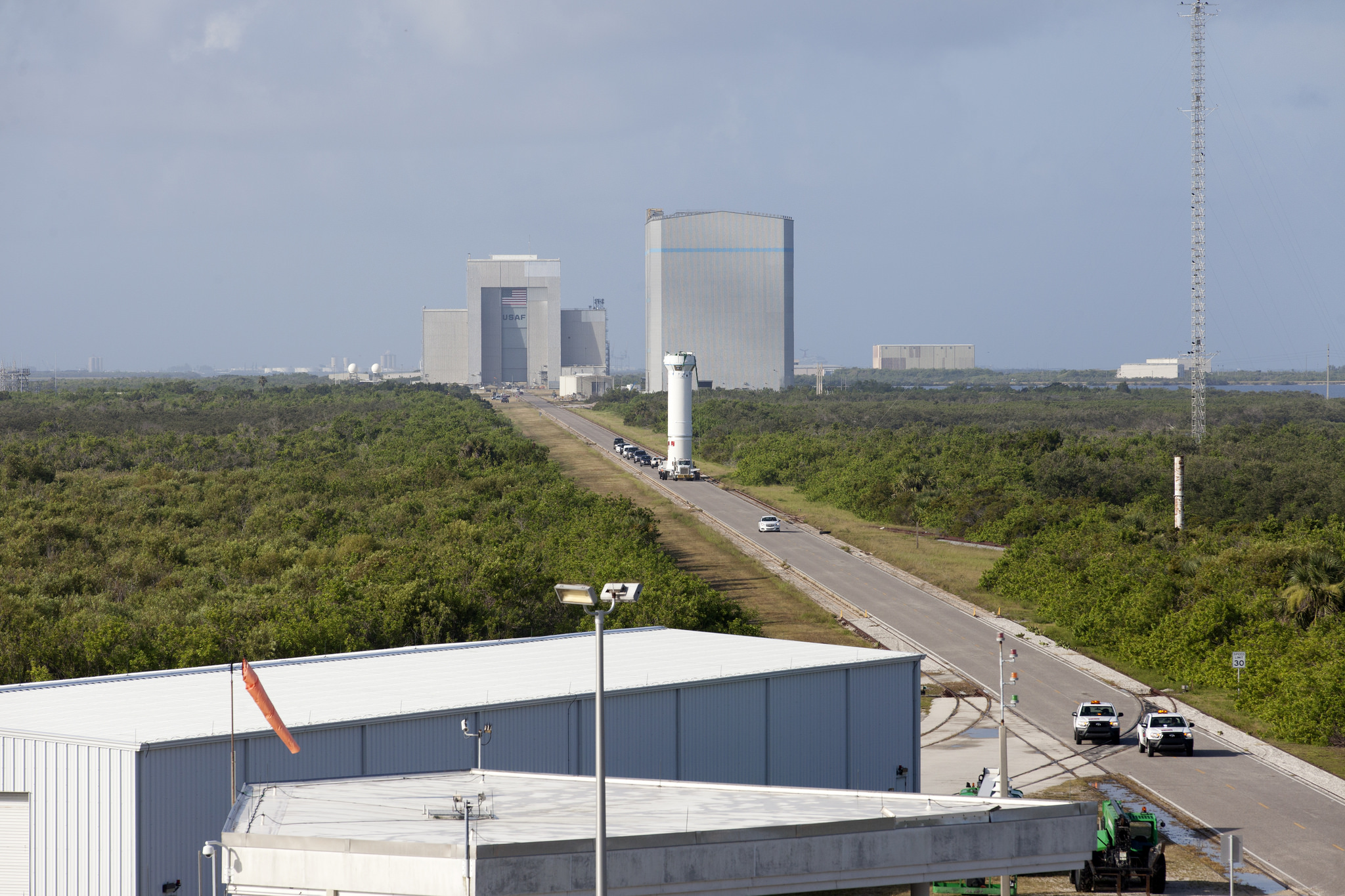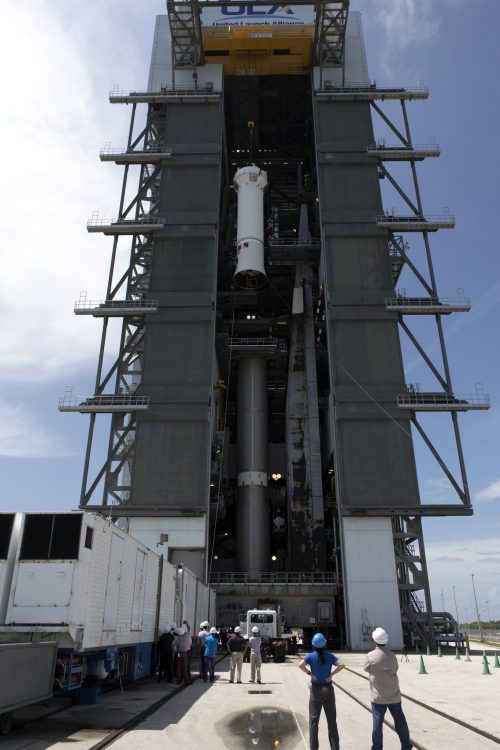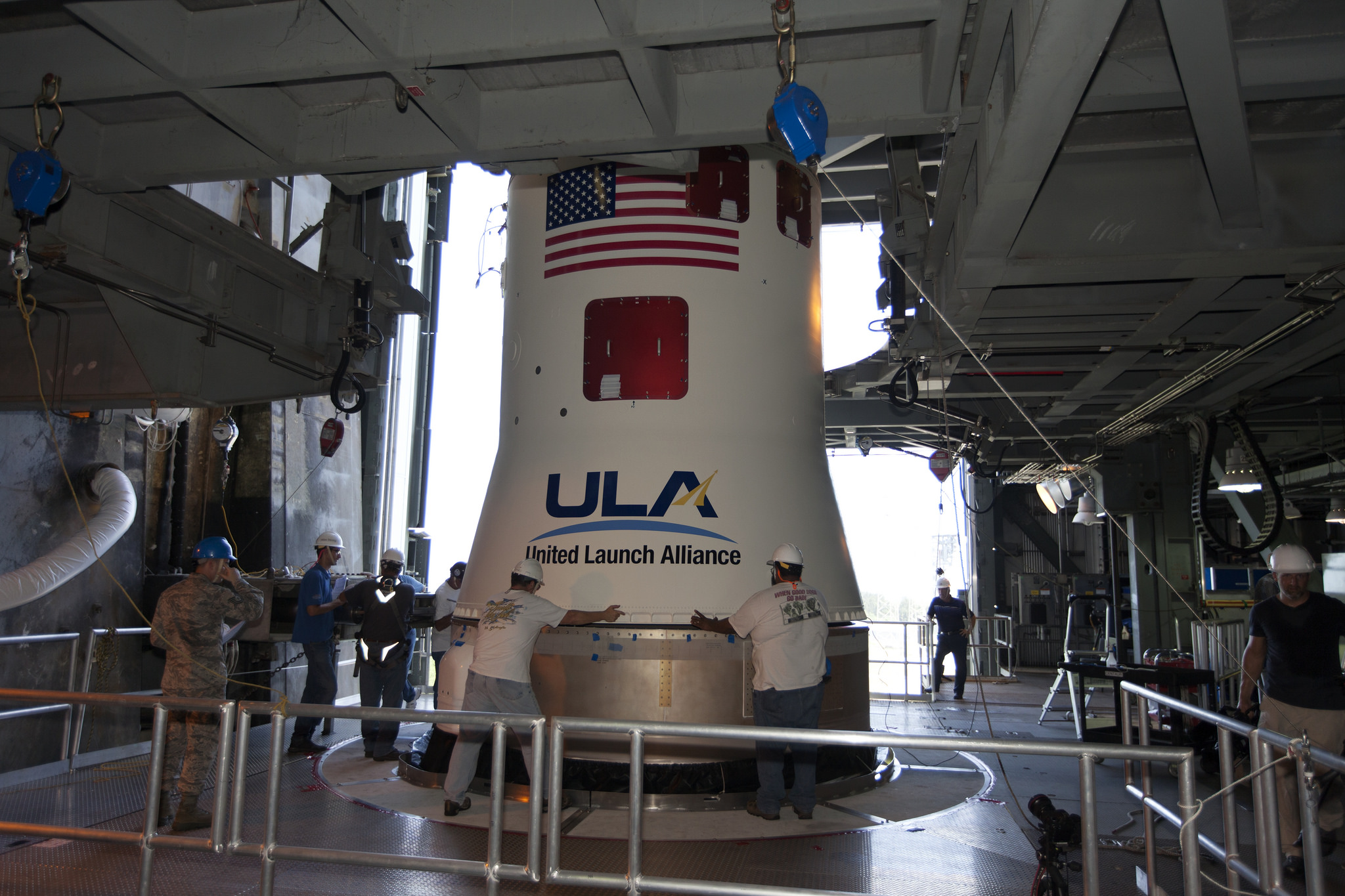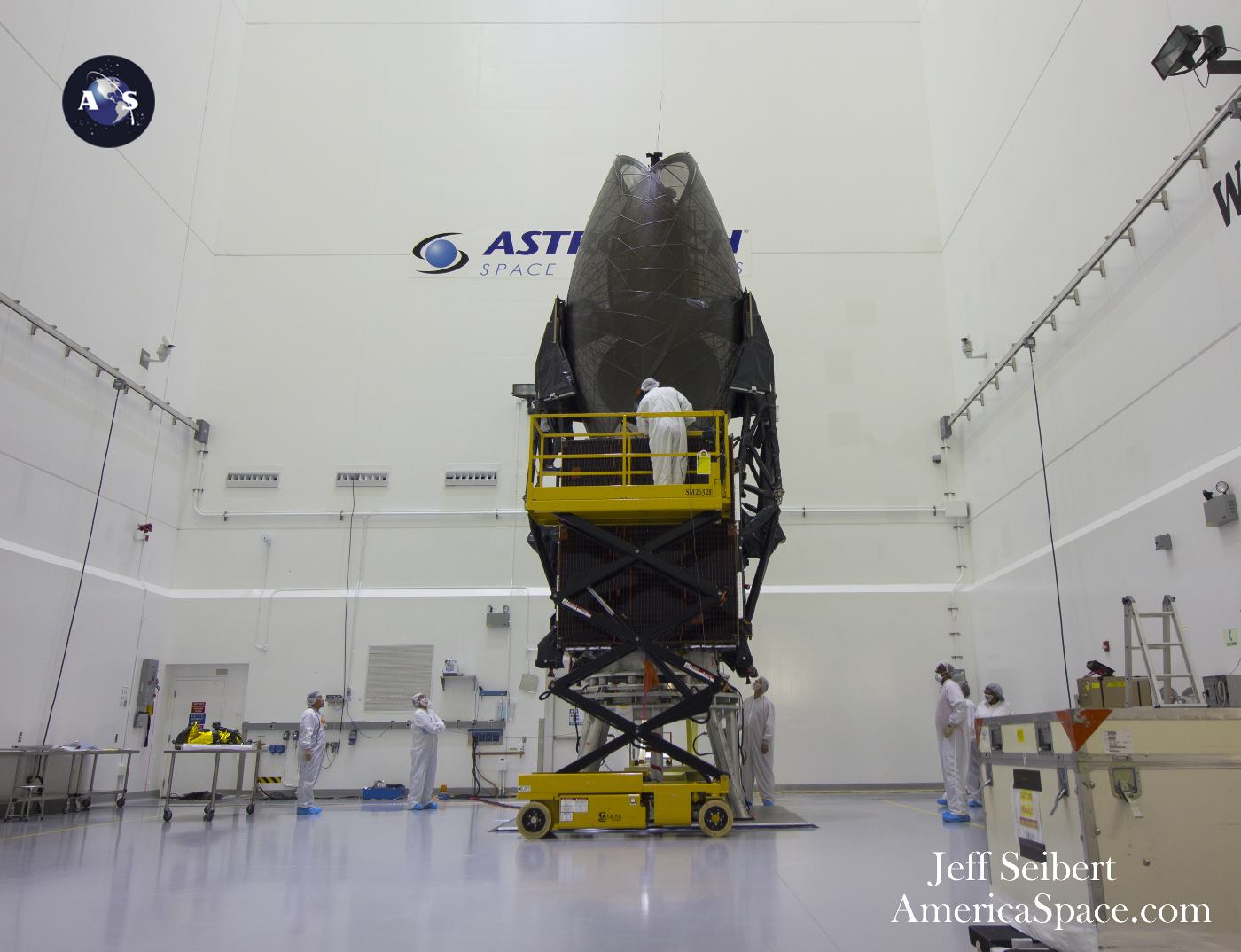
The launch of NASA’s next Tracking Data Relay Satellite, TDRS-M, is now rescheduled for 7:56 a.m. EDT August 20, at the beginning of a 40-minute window. The delay gives the satellite’s Boeing processing team time to replace its Omni S-band antenna, which was damaged during final spacecraft closeout activities at Astrotech Space Operations in Titusville, Florida on July 14, ahead of a (then) scheduled August 3 launch.
ULA’s 19-story tall Atlas-V 401 rocket will ensure the satellite reaches orbit, and is currently waiting for its payload to arrive at the Vertical Integration Facility (VIF) at Space Launch Complex 41 on Cape Canaveral Air Force Station in Florida, where both the rocket’s first and second stages are now integrated together.
TDRS-M marks the third member of the current third generation of TDRS satellites, the inaugural contracts for which were signed between NASA and Boeing in December 2007.
As outlined previously on AmericaSpace:
“Under the provisions of that agreement, the aerospace giant built TDRS-K—launched in January 2013—and TDRS-L, at a cost of $695 million, in order to “ensure vital operational continuity” of an orbital network of communications and data-relay assets which presently support dozens of spacecraft, including the International Space Station and the Hubble Space Telescope.”
“All three satellites are designed to support 15-year operational lives, which enables continuity until the middle or even the end of the 2020s.”
See some of the photos recently released by NASA and ULA (and one of our own) below.
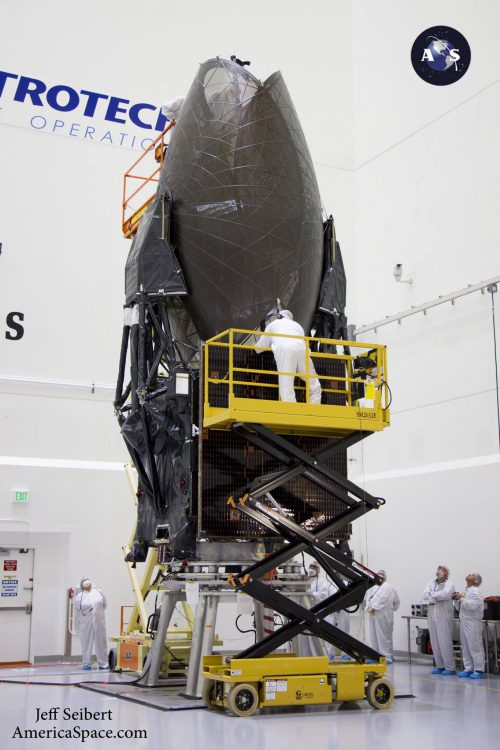
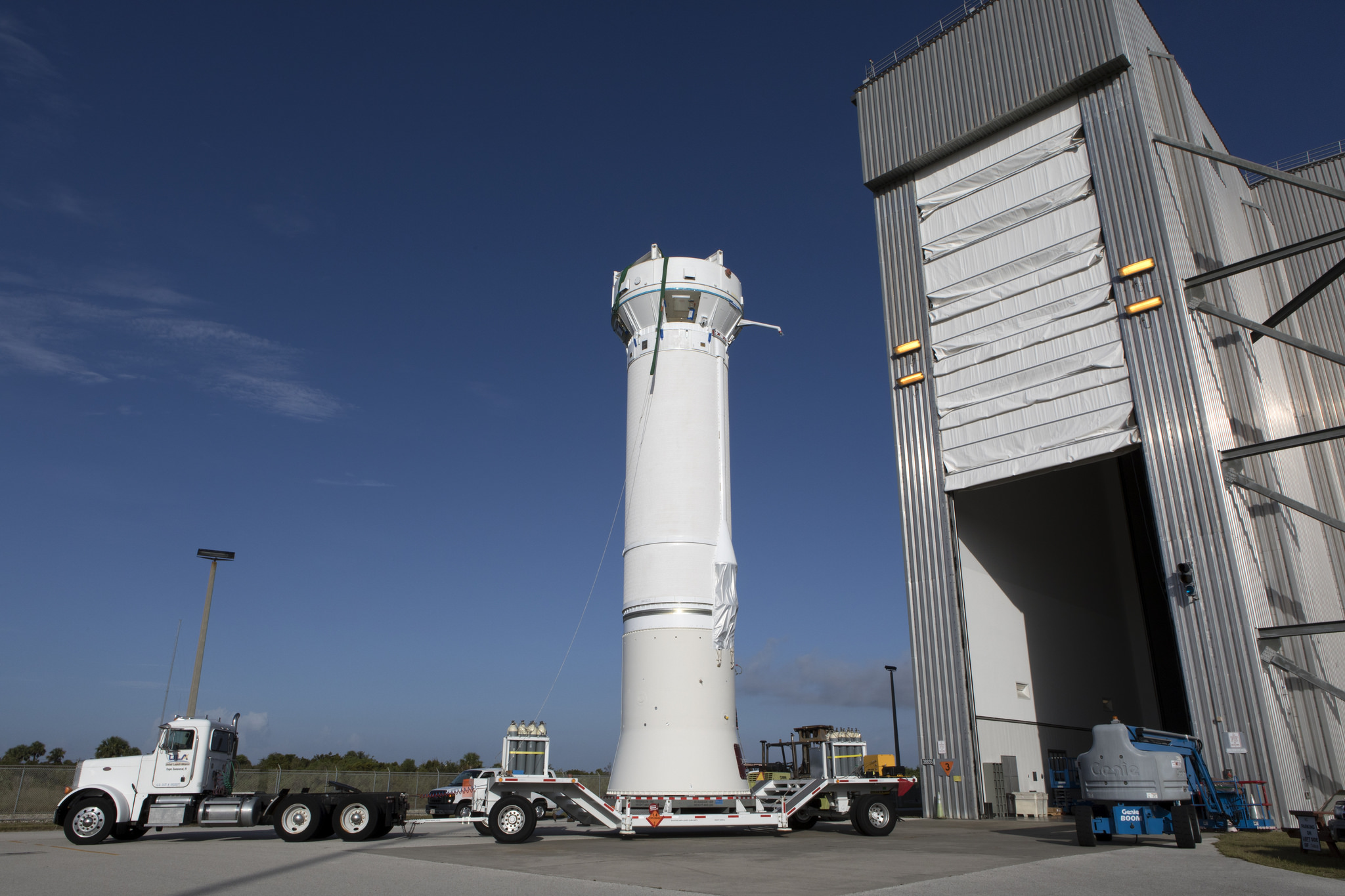
.
.
Be sure to “LIKE” AmericaSpace on Facebook and follow us on Instagram & Twitter!
.
Missions » TDRS »



